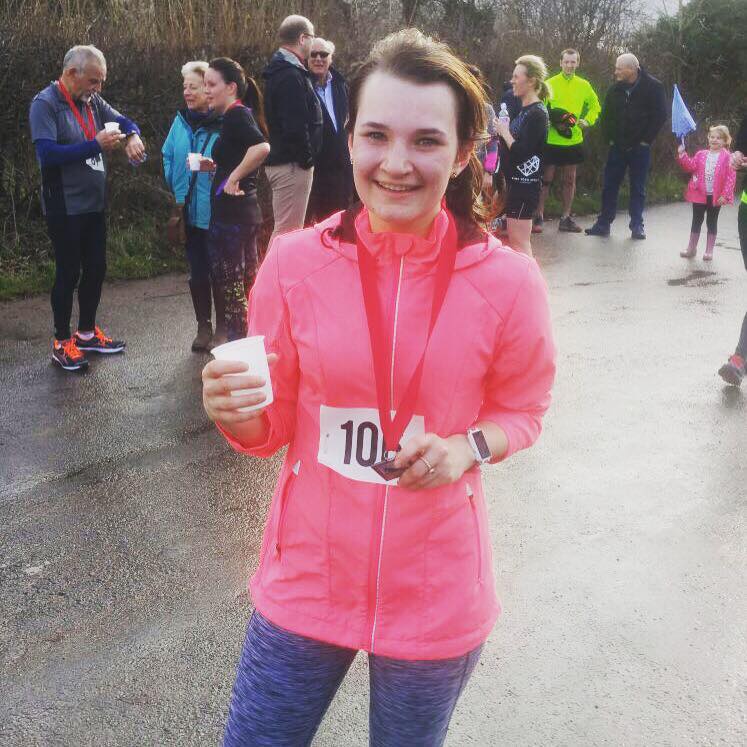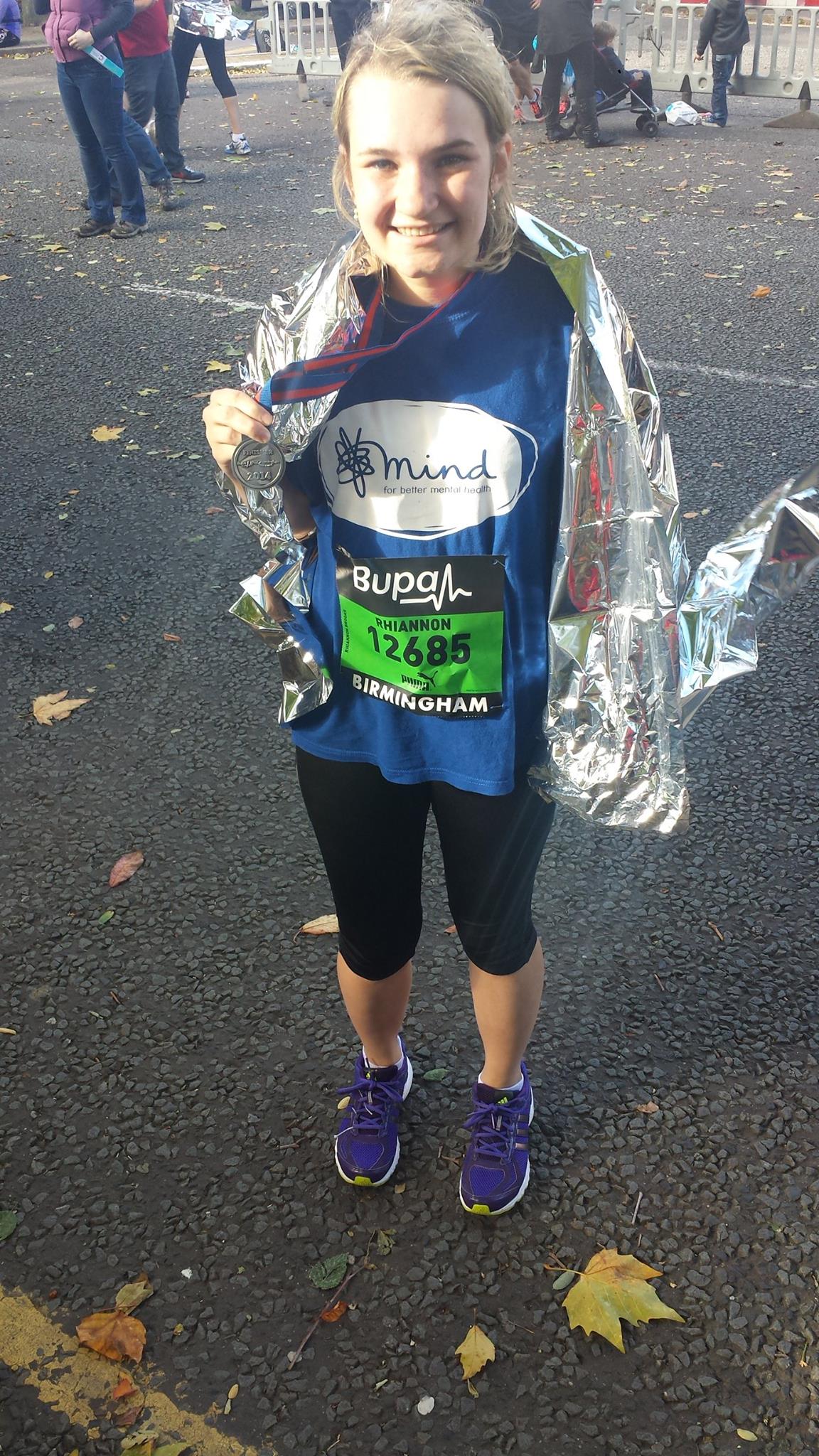Rhiannon Brooks
After undertaking an early career research fellowship within the Institute of Advanced StudyLink opens in a new window, Rhiannon moved to London Metropolitan University to take up a position as a Lecturer in Chemistry and Pharmaceutical Science. For more information see hereLink opens in a new window.
My main research interests include the following:
- Applications of NMR for studying the structure and dynamics of biological systems
- Folding and interactions of membrane proteins
- Utilising a wide range of biophysical techniques to understand the physical properties of proteins
PhD Project
My PhD project focussed on investigating membrane-curvature sensing proteins using solution-state nuclear magnetic resonance (NMR), as well as a range of other biophysical techniques, under the supervision of Dr. Ann Dixon (Department of Chemistry).
Bacteria and eukaryotic cells contain geometry-sensing proteins within their cytosol that are able to recognise the curvature of lipid membranes. Membrane curvature sensors have been linked to a diverse range of cellular processes, such as lipid transfer between membranes, the tethering of vesicles at the Golgi apparatus, and the assembly-disassembly cycle of protein coats. However, whilst an increasing number of membrane-surface associated proteins have been identified as sensors of membrane curvature, the mechanisms behind curvature sensing are still not completely understood and can differ greatly between different protein families. Sensors that have previously been identified include long amphipathic helices (APHs) such as that found in ArfGAP1, a special type of APH called amphipathic lipid-packing sensors (ALPS), as well as the N-terminal region of α-synuclein. Although these are both APHs, they have remarkably different chemistries; ALPS motifs lack charged residues in their polar face, whereas the APH in α-synuclein does not contain large bulky hydrophobic residues but does have a very well-defined zwitterionic polar face.
The aim of this project was to investigate the mechanism behind curvature sensing peptides, with respect to binding, structural changes, and dynamics, in addition to characterising the impact of these peptides on membrane morphology. This work was a first step to understanding how the membrane morphology can be a unique target in itself, separate from receptors embedded within the membrane, and has implications in industrial biotechnology areas of antimicrobial development and drug transport.
To achieve this, we used a multi-method approach that allowed us to monitor the structure of the peptides at atomic resolution. This was primarily be achieved using solution-state NMR, as well as a multitude of other complementary biophysical techniques such as circular dichroism, fluorescence spectroscopy, and dynamic light scattering.
Academic Background
| 2017 - 2021 | PhD Analytical Science | University of Warwick | |
| 2016 - 2017 | MSc Molecular Analytical Science | University of Warwick | Pass with Distinction |
| 2011 - 2016 | MChem Chemistry with Medicinal Chemistry | University of Warwick | Upper Second Class Honours |
Previous Research
Msc Mini-Project 2, July - September 2017
"Quantitative Visualisation of Human Hair using Electrochemical Imaging."
Supervised by Prof. Pat Unwin (Department of Chemistry).
The aims of this mini-project were to demonstrate the proficiency of scanning ion conductance microscopy (SICM) for quantitatively visualising the surface charge of human hair, and to identify regions of interest for further investigation. Previous work carried out by the Warwick Electrochemistry and Interfaces Group (WEIG) emphasised the emergence of SICM as a multifunctional technique for simultaneously probing both the structure and function of an interface with nanometre resolution, and demonstrated the applicability of this system to the challenge of quantifying the surface charge of human hair for the cosmetic industry; offering a much better alternative to existing procedures such as evaluating zeta-potentials.
MSc Mini-Project 1, April - July 2017
"Towards in-cell target engagement using fluorine solid-state NMR."
Supervised by Dr. Józef R. Lewandowski (Department of Chemistry), Elisabetta Chiarparin (AstraZeneca) and Amber Balazs (AstraZeneca).
The aim of this project was to develop a fluorine solid-state NMR technique to directly quantify drug binding inside cells, without compromising their viability. This method relied on a competition binding assay and so the feasibility of in-cell competitive binding assays using fluorine solid-state NMR was demonstrated in vitro by performing measurements on both frozen buffer solutions and sedimented solids of a model protein complexed with fluorinated ligands. The results were then used to optimise the conditions in preparation for progression to in-cell experiments. The assay in question involved a ligand with moderate affinity for the target protein known as a ‘spy molecule’, whose release was then quantified, via relaxation measurements, when a more strongly binding molecule was introduced.
MChem Final Year Project, October 2015 - June 2016
"Biophysical characterisation of a membrane-curvature induced amphipathic helix C-terminal to the reticulon homology domain of RTNLB13 in Arabidopsis thaliana."
Supervised by Dr. Ann Dixon (Department of Chemistry).
Here, circular dichroism and solution-state NMR were used to characterise the secondary structure of an 18-amino acid peptide corresponding to residues 154-171 of RTNLB13, one of the smallest and best-studied plant reticulon (RTN) isoforms, hypothesized to be a conserved amphipathic helix (APH) in vivo. It has recently been demonstrated that loss of this region, or mutations that disrupt the amphipathicity, destroys RTNLB13’s ability to constrict ER tubules, but not its capacity to oligomerise. Whilst this provides evidence that this putative APH is a requirement for RTN function, it reveals nothing about the necessary properties that induce formation of an alpha–helix in this region. Various detergent micelles, lipid vesicles and bicelles were therefore used as model membranes to explore a correlation between the physical properties of the membrane and the peptide secondary structure in order to gain greater insight into the role of the APH in RTN function.
Conferences Attended
- 60th Anniversary Meeting of The British Biophysical Society, Zoom Meeting, 14th-17th September 2020.
2-Minute Flash Presentation titled "Revealing the mechanism of protein-lipid interactions for a putative membrane curvature sensor in plant endoplasmic reticulum".
- RSC Analytical Biosciences Group AGM, University College London, 14th November 2019.
Invited to give a 30 minute talk titled “Biophysical investigation of membrane-curvature sensing proteins”.
- EMBO Workshop: Tools for Structural Biology of Membrane Proteins, EMBL Hamburg, 7th-9th October 2019.
Poster Presentation titled “Protein-lipid interactions for a putative membrane curvature sensor in plant ER”.
- Protein and Peptide Science Group Early Stage Researcher Meeting, University of Wolverhampton, 26th July 2019.
Poster Presentation titled "Biophysical investigation of membrane curvature sensing amphipathic helices".
- 14th Chemistry and Biology of Peptides Meeting, University of Wolverhampton, 25th July 2019.
- RSC 6th Analytical Biosciences Early Career Researcher Meeting 2019, University of Cambridge, 28th-29th March 2019
20 minute Oral Presentation and Poster Presentation titled "Biophysical investigation of membrane curvature sensing amphipathic helices". Awarded prizes for poster and oral presentation.
- British Biophysical Society Biennial Meeting, University of Southampton, 11th-13th July 2018
Poster Presentation titled "Investigating the mechanism behind membrane-curvature responsive proteins".
Publications
- E. S. Jayawant, J. Hutchinson, D. Gasparíková, C. Lockey, L. Pruñonosa Lara, C. Guy, R. L. Brooks and A. M. Dixon, Chembiochem, 2021.
- R. L. Brooks, C. S. Mistry and A. M. Dixon, Sci. Rep., 2021, 11, 6326.
- R. L. Brooks and A. M. Dixon, Biochim. Biophys. Acta, Biomembr., 2020, 1862, 183160.
- F. M. Maddar, D. Perry, R. Brooks, A. Page and P. R. Unwin, Anal. Chem., 2019, 91, 4632-4639.
- E. Breeze, N. Dzimitrowicz, V. Kriechbaumer, R. Brooks, S. W. Botchway, J. P. Brady, C. Hawes, A. M. Dixon, J. R. Schnell, M. D. Fricker and L. Frigerio, Proc. Natl. Acad. Sci. U.S.A., 2016, 113, 10902-10907.Link opens in a new window
Other
I was the Department of Chemistry's postgraduate student-staff liason committee (PG SSLC) respresentative for DTC students for the academic year 2018/19.
During my PhD, I have had the opportunity to supervise and teach MChem and URSS project students. In addition to demonstrating workshops and labs for both chemistry undergraduates and taught postgraduates including the modules CH916, CH915 and CH222. I have also had the chance to assist in delivering some of the Department of Chemistry's various outreach sessions for local primary and secondary schools. More recently, I planned and delivered a series of 45 minute workshops for Tudor Hall School's Aim Higher Conference in order to encourage girls aged 14-18 years old to consider studying STEM subjects at University.
Outside of my PhD, I enjoy long-distance running and have taken part in various events, including the Great Birmingham Run and the Coventry Half-Marathon, as well as climbing and hiking.



MAS-CDT
Top Floor Senate House
University of Warwick
Coventry
CV4 7AL
r dot l dot brooks at warwick dot ac dot uk
